The design of the garden on the roof of the house becomes quite popular as among the inhabitants ...
|
|
External slopes are an important detail of the window structure. They are mounted not only ... |
In the system of heat exchange of the house, floors are one of the places of large heat loss. AT... |
Gas silicate blocks - basic properties and characteristics
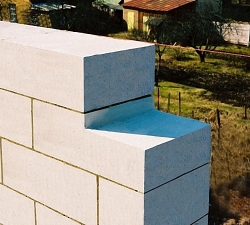
Another popular material that has captured a significant share in the building materials market is gas storage. Ready -made shaped blocks have much in common with artificial stone, and are distinguished by noticeable advantages. For this reason, gas silicate blocks have gained such wide popularity in the construction of houses.
Table of contents:
- Where gas -sized blocks are used
- Characteristics of the material
- The advantages and disadvantages of gas silicate blocks
- How gas -sized blocks are produced
Where gas -sized blocks are used
The scope of the gas silicate lies in the following directions:
- thermal insulation of buildings,
- building buildings and load -bearing walls,
- isolation of the heating system.
In terms of their qualities, gas silicate blocks have a lot in common with foam concrete, but at the same time surpass them in mechanical strength.
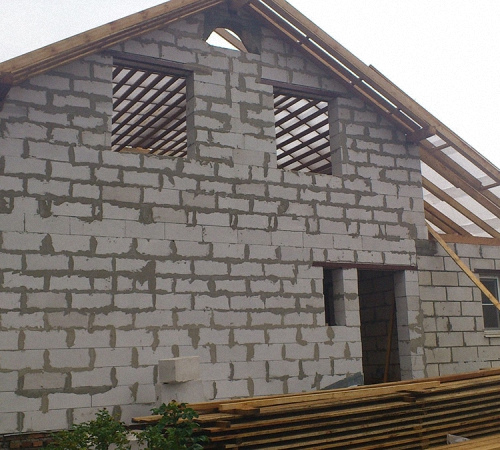
Depending on the density of the material. There are several areas of application:
- The density of blocks from 300 to 400 kg/m3 greatly limits their distribution, and such blocks are more often used as a heater for walls. The low density does not allow them to be used as a basis for walls, since with a significant mechanical load they will be destroyed. But as a heater, the low density plays its role, because the more tightly the molecules adjolate each other, the higher the thermal conductivity and the cold is easier to penetrate the room. Therefore, blocks with low thermal conductivity provide more effective thermal insulation,
- blocks density of 400 kg/m3 have found their application in the construction of one -story buildings and working rooms. Due to the increased strength of the blocks and their lower weight, the costs of arranging the foundation are significantly reduced,
- blocks with a density of 500 kg/m3 are more often used in the construction of buildings a height of several floors. As a rule, the heightness of the building should not exceed the mark of three floors. Similar blocks, in the immediate dependence of the climate, are either not insulated at all, or require traditional methods of insulation.
- the most optimal option for building high -rise buildings is the use of blocks with a density of 700 kg/m3. A similar indicator allows you to build high -rise housing and industrial buildings. Due to the lower cost, the erected walls of gas silicate blocks displace traditional brick and made of reinforced concrete.
The higher the density, the worse the heat -insulation indicators, so such buildings will require additional insulation. More often the outer is provided using polystyrene or polystyrene foam plates. This material has a low price and at the same time provide good thermal insulation of the room at any time of the year.
Recently, the position of gas -slander, as one of the most demanded during the construction of materials, has been significantly strengthened.
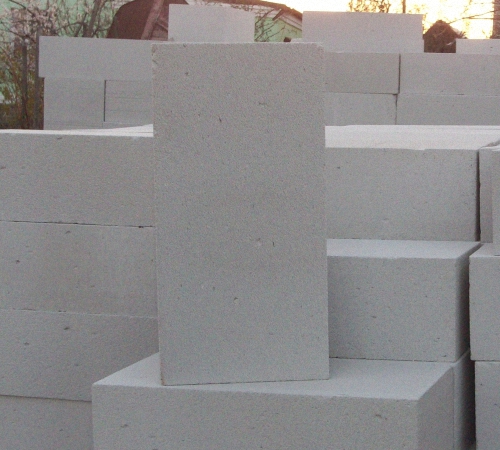
Relatively small weight of finished blocks will significantly accelerate the construction of the building. For example, gas silicate blocks, the dimensions of which have typical values, according to some estimates reduce the complexity of installation to 10 times compared to brick.
A standard block with a density of 500 kg/m3 with a weight of 20 kg is able to replace 30 bricks, the total mass of which will be 120 kg. Thus, the installation of blocks on buildings with low number of storeys will not require special equipment, reduce labor costs and the time spent on building the building. According to some estimates, the saving of time reaches a decrease in the cost of it 4 times.
Characteristics of the material
It makes sense to list the basic technical characteristics of gas silicate blocks:
- the specific heat capacity of the blocks made by autoclave is 1 kJ/kg*s. For example, a similar indicator of reinforced concrete is at 0.84,
- the density of reinforced concrete is 5 times higher, but at the same time, the coefficient of thermal conductivity of the gas silicate is an indicator of only 0.14 W/m*C, which is approximately similar to the indicator of pine wood or spruce. Reinforced concrete has a much larger coefficient, at 2.04,
- the characteristics of the sound absorption of the material are at the level of the coefficient of 0.2, at a sound frequency of 1000 Hz,
- the cyclicity of frost resistance in gas silicate blocks with material density below 400 kg/m3 is not normalized, in blocks with a density of up to 600 kg/m3, up to 35 cycles. Blocks with a density above 600 kg/m3 are able to withstand 50 freezing and thawing cycles, which is 50 climatic years.
If we compare gas -mushroom blocks with brick, then the indicators are not in favor of the latter. So, the required wall thickness to ensure sufficient thermal conductivity for blocks is up to 500 mm, while the brick will require a similar masonry with a thickness of 2000 mm. The consumption of the solution for laying the material will be for a brick 0.12 m3 and 0.008 m3 for gas silicate blocks per 1 m2 of masonry.
The weight of one square meter of the wall will be up to 250 kg for gas silicate material, and up to two tons of brick. In this case, the corresponding thickness of the foundation for the supporting walls of the building under construction is required. Brick masonry will require the thickness of the foundation of at least 2 meters, while for gas silicate blocks there is enough thickness of only 500 mm. The complexity of the masonry of the blocks is much lower, which will reduce labor costs.
Among other things, gas silicate blocks are much greater environmental friendliness. The coefficient of this material is two points, bringing it to a natural tree. At the same time, an indicator of the environmental friendliness of brick is at a level of 8 to 10 units.

The advantages and disadvantages of gas silicate blocks
Gas silicate blocks, the price of which will significantly reduce the cost of building a house, have the following number of undeniable advantages:
- Small weight of ready -made blocks. The gas -wire block weighs 5 times less compared to similar concrete. This will significantly reduce the cost of delivery and installation.
- High strength for mechanical compression. The gas storage with the D500 index, indicating that its density is 500 kg/m3, demonstrates an indicator up to 40 kg/cm3.
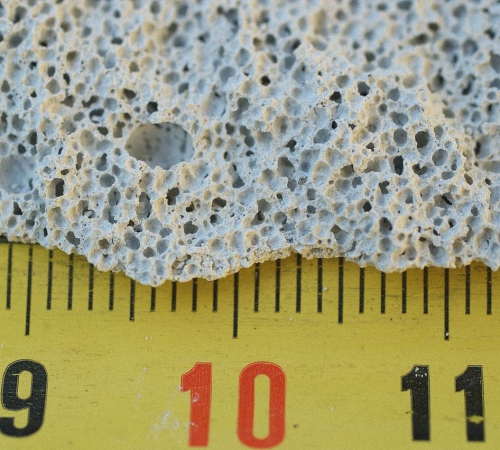
- The indicator of thermal resistance is 8 times higher than similar to heavy concrete. Due to its porous structure, good indicators of thermal insulation are ensured.
- Gas soster blocks have heat -accumulating properties. They are able to give the accumulated heat into the room, which will reduce heating costs.
- Due to the porous structure, the degree of sound insulation is 10 times higher in brick.
- The material does not contain any toxins and has good indicators of environmental friendliness.
- The gas stern is distinguished by its non -combustibility and does not spread combustion. It withstands the direct impact of the flame for at least three hours, due to which the situation with the spread of the fire is almost completely excluded.
- The vapor permeability of the blocks is much higher than that of competitors. It is believed that the material is able to breathe well, while creating a comfortable microclimate indoors.
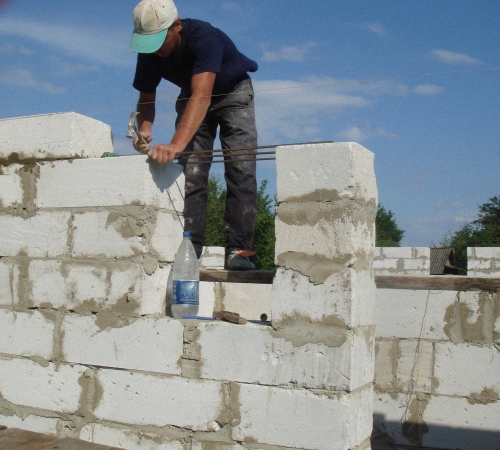
Nevertheless, gas silicate blocks are currently not able to deliver a crushing blow to all competitors. This material is also characterized by significant shortcomings:
- The gas mushroom has low mechanical strength. When driving into it, he begins to crumble and crumble, and is not able to ensure effective retention. Roughly speaking, it is still possible to really hang a clock or picture on a wall of gas silicate blocks. But the regiment can already collapse, as the fasteners can simply slip out of the wall.
- Blocks do not differ in good frost resistance. Despite the stated cycle of 50 years for brands with increased strength, there is no reliable information about the durability of the blocks of the D300 brands.
- The main disadvantage of gas -slander is its high absorption of moisture. It penetrates the structure, gradually destroying it and the material loses its strength.
- The following comes out of the above deficiency: the accumulation and absorption of moisture leads to the appearance of the fungus. In this case, the porous structure serves as a good condition for its distribution.
- The material is able to significantly sit down, as a result of which cracks often appear in the blocks. Moreover, after two years, cracks are able to appear on 20% of the laid blocks.
- It is not recommended to apply cement-sand plaster. They are able to simply fall off the wall. The gypsum plaster recommended by many sellers is also not an effective tool. When applying to a wall of gas silicate blocks, it is not able to hide the seams between the blocks, and when the cold weather occurs on it, noticeable cracks appear on it. This is due to the difference in temperatures and changes in the tightness of the material.
- Due to the high absorption of moisture, the plaster will require application of at least two layers. Moreover, due to strong shrinkage, the plaster is covered with cracks. They will not affect tightness, but will greatly violate the aesthetic component. The gypsum mixture is well held on gas silicate blocks, and despite the appearance of cracks - it does not break.
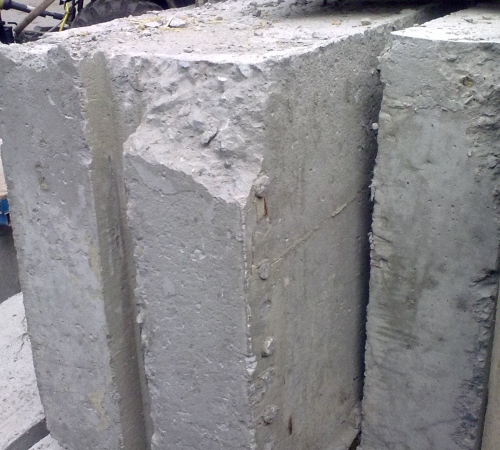
How gas -sized blocks are produced
Buying gas -free blocks is more advisable for those dealers that represent the products of well -known manufacturers. Modern high -quality equipment on factory lines allows you to ensure proper control over the quality of the manufactured gas silicate blocks, so the buyer is confident in the durability of the purchased products.
The production process itself is divided into several stages, and what is characteristic, each of them is fully automated. This excludes the intervention of the human factor, on which the quality of the products often depends. Especially on Fridays and Mondays. Who worked in the production will understand.
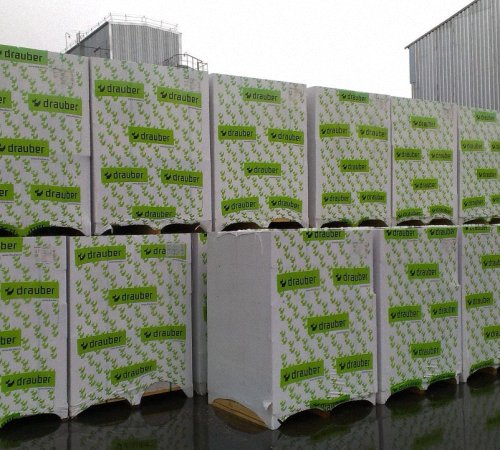
Crushing of lime, sand and gypsum, which forms the basis for the production of blocks. By adding water, the sand is grinded to the state of the liquid mixture. It is sent to the mixer, in which cement, gypsum and lime are added. Further, the components are kneaded, and during this process an aluminum suspension is added to them.
After all the components were carefully mixed with each other, the mixture is poured into the forms that are moved to the maturation zone. When exposed to temperatures in 40C for four hours, the material is swelling. In this case, hydrogen is actively released. Thanks to this, the final mass acquires the necessary porous structure.
Using a capture for turning and cutting machine, cuts are cut to the desired dimensions. In this case, automation controls the exact and defective cutting of products.
Following this, the blocks are sent to the autoclave to recruit the final strength. This process proceeds in the chamber when exposed to temperatures in 180C for 12 hours. At the same time, the pressure of the steam on the gas storage should be at least 12 atmospheres. Thanks to this regime, ready -made blocks gain the optimal value of the final strength.

Thanks to the cranes and the equipment for the final quality control, the blocks are laid for their subsequent natural cooling. After that, possible pollution are removed on the automatic line from the blocks and the packaging and marking of the blocks are carried out.
It is noteworthy, the production process is non -waste, since at the time of cutting, the waste of raw massif is sent for re -processing, adding the material to other blocks.
Pallets with packed gas silicate blocks receive their technical passport with details of the physical properties and technical characteristics of the product so that the buyer can make sure in accordance with the applied characteristics.
Further work is already behind dealers and marketers, on which the success of the productivity of the product will depend.
